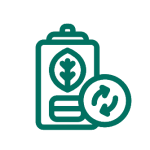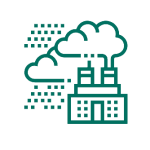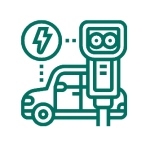Infrastructure Investment and Jobs Act
With the recently passed $1.2 trillion Infrastructure Investment and Jobs Act (aka, Bipartisan Infrastructure Bill), HEPF’s 2022 Legislative Briefing presented an expert view of the Bipartisan Infrastructure Bill to address the most vulnerable aspects of Hawai’i’s energy infrastructure. The Hawai’i Energy Policy Forum has been tracking the federal funding opportunities related to new energy, ports and waterways, resilience, and transportation programs to help support Hawai’i’s transition to a clean energy future. Please check back here as more information about funding opportunities become available.
New Programs (total funding for all states):
Below is an overview of the new programs related to energy, resilience, and transportation. Also provided under each program is a description, funding mechanism, recipients, eligible uses, and the next program milestone. As more information about funding opportunities become available for each new program, please check below “Next Program Milestone” for updates.

Program Description: To provide grants to ensure that the United States has a viable domestic manufacturing and recycling capability to support a North American battery supply chain.
Funding Mechanism: Grant.
Recipients: (1) Institutions of higher education. (2) National Laboratories. (3) Nonprofit and for-profit private entities. (4) State and local governments. (5) Consortia of entities described in paragraphs (1) through (4).
Eligible Uses: Demonstration projects, construction of commercial-scale facilities, and retrofit or retooling of existing facilities for battery component manufacturing, advanced battery manufacturing, and recycling.
Next Program Milestone: Notice of Intent to Publish FOA (NOI). Estimated application opening date, 3rd quarter 2022.
Program Description: To provide grants for battery materials processing to ensure that the United States has a viable battery materials processing industry. Funds can also be used to expand our domestic capabilities in battery manufacturing and enhance processing capacity.
Funding Mechanism: Grant.
Recipients: (1) Institutions of higher education. (2) National Laboratories. (3) Nonprofit and for-profit private entities. (4) State and local governments. (5) Consortia of entities described in paragraphs (1) through (4).
Eligible Uses: Demonstration projects, construction of commercial-scale facilities, and retrofit or retooling of existing battery material processing facilities.
Next Program Milestone: Notice of Intent to Publish FOA (NOI). FA Deadline: TBD.
Program Description: To expand an existing program at Department of Energy for research, development, and demonstration of electric vehicle battery recycling and second-life applications for vehicle batteries.
Funding Mechanism: Cooperative Agreement.
Recipients: (1) Institutions of higher education. (2) National Laboratories. (3) Nonprofit and for-profit private entities. (4) State and local governments. (5) Consortia of entities described in paragraphs (1) through (4).
Eligible Uses: (i) To conduct research, development, testing, evaluation of solutions to increase the rate and productivity of electric drive vehicle battery recycling; and(ii) for research, development, and demonstration projects to create innovative and practical approaches to increase the recycling and second-use of electric drive vehicle batteries.
Next Program Milestone: Notice of Intent to Publish FOA (NOI). FA Deadline: TBD.

Program Description: To establish a carbon capture technology program for the development of 6 facilities to demonstrate transformational technologies that will significantly improve the efficiency, effectiveness, costs, emissions reductions, and environmental performance of coal and natural gas use, including in manufacturing and industrial facilities.
Funding Mechanism: Cooperative Agreement.
Recipients: Technology Developers, Industry, Utilities, Universities, National Laboratories, Engineering and Construction firms, State and Local Governments, Tribal, Environmental Groups, and Community Based Organizations.
Eligible Uses: Of the demonstration projects carried out — (i) 2 shall be designed to capture carbon dioxide from a natural gas electric generation facility; (ii) 2 shall be designed to capture carbon dioxide from a coal electric generation facility; and (iii) 2 shall be designed to capture carbon dioxide from an industrial facility not purposed for electric generation.
Next Program Milestone: Request for Information (RFI).
Program Description: To establish a carbon capture technology program for the development of transformational technologies that will significantly improve the efficiency, effectiveness, costs, emissions reductions, and environmental performance of coal and natural gas use, including in manufacturing and industrial facilities.
Funding Mechanism: Cooperative Agreement.
Recipients: Technology Developers, Industry, Utilities, Universities, National Laboratories, Engineering and Construction firms, State and Local Governments, Tribal, Environmental Groups, and Community Based Organizations.
Eligible Uses: Pilot projects that—(A) represent the scale of technology development beyond laboratory development and bench scale testing, but not yet advanced to the point of being tested under real operational conditions at commercial scale;(B) represent the scale of technology necessary to gain the operational data needed to understand the technical and performance risks of the technology before the application of that technology at commercial scale or in commercial-scale demonstration; and(C) are large enough—(i)to validate scaling factors; and(ii)to demonstrate the interaction between major components so that control philosophies for a new process can be developed and enable the technology to advance from large-scale pilot project application to commercial-scale demonstration or application.
Next Program Milestone: Request for Information (RFI).
Program Description: To establish and carry out a carbon dioxide transportation infrastructure finance and innovation program.
Funding Mechanism: Loan / Grant.
Recipients: State / Local / Public Authority.
Eligible Uses: Projects that–(A) are large-capacity, common carrier infrastructure;(B) have demonstrated demand for use of the infrastructure by associated projects that capture carbon dioxide from anthropogenic sources or ambient air;(C) enable geographical diversity in associated projects that capture carbon dioxide from anthropogenic sources or ambient air, with the goal of enabling projects in all major carbon dioxide-emitting regions of the United States; and(D) are sited within, or adjacent to, existing pipeline or other linear infrastructure corridors, in a manner that minimizes environmental disturbance and other siting concerns.
Next Program Milestone: Estimated application opening date, 4th quarter 2022.
Program Description: The Carbon Reduction Program will provide formula grants to States to reduce transportation emissions or the development of carbon reduction strategies.
Funding Mechanism: Formula Grant.
Recipients: States (including District of Columbia).
Eligible Uses: States may use Carbon Reduction Program funds for projects that support the reduction of transportation emissions, including: the construction, planning, and design of trail facilities for pedestrians, bicyclists, and other nonmotorized forms of transportation; public transportation projects; and congestion management technologies.
Next Program Milestone: First round of funds apportioned in December 2021. However, funding not distributed due to the continuing resolution.
Program Description: To establish a program of research, development, and demonstration for carbon storage.
Funding Mechanism: Grant or Cooperative Agreement.
Recipients: Industry Partner.
Eligible Uses: Development of new or expanded commercial large-scale carbon sequestration projects and associated carbon dioxide transport infrastructure, including funding for the feasibility, site characterization, permitting, and construction stages of project development.
Next Program Milestone: Request for Information (RFI).
Program Description: To establish a grant program for state and local governments to procure and use products derived from captured carbon oxides.
Funding Mechanism: Grant.
Recipients: State / Local / Public Utility.
Eligible Uses: An eligible entity shall use a grant received under this paragraph to procure and use commercial or industrial products that– (i) use or are derived from anthropogenic carbon oxides; and (ii) demonstrate significant net reductions in lifecycle greenhouse gas emissions compared to incumbent technologies, processes, and products.
Next Program Milestone: Request for Information (RFI).

Program Description: Funding and expansion of eligible activities under the Smart Grid Investment Matching Grant Program established under section 1306 of the Energy Independence and Security Act of 2007.
Funding Mechanism: Grant.
Recipients: Utilities.
Eligible Uses: Qualifying Smart Grid investments including for installation, that allow buildings to engage in demand flexibility or Smart Grid functions.
Next Program Milestone: Applications for the Smart Grid program are expected to be open by the end of 2022.
Program Description: To provide grants to eligible States to train individuals to conduct energy audits or surveys of commercial and residential buildings to build the clean energy workforce, save customers money on their energy bills, and reduce pollution from building energy use.
Funding Mechanism: Grant.
Recipients: States.
Eligible Uses: (A) To cover any cost associated with individuals being trained or certified to conduct energy audits by— (i) the State; or (ii) a State-certified third-party training program; and (B) to pay the wages of a trainee during the period in which the trainee receives training and certification.
Next Program Milestone: Estimated application opening date, 2nd quarter 2022.
Program Description: To assist states, local governments, and Tribes to reduce energy use, reduce fossil fuel emissions, and improve energy efficiency.
Funding Mechanism: Block and Competitive Grants.
Recipients: State/Local Government/Tribes.
Eligible Uses: (1) Development and implementation of an energy efficiency and conservation strategy (2) retaining technical consultant services to assist the eligible entity in the development of such a strategy, including—(3) conducting residential and commercial building energy audits;(4) establishment of financial incentive programs for energy efficiency improvements;(5) the provision of grants to nonprofit organizations and governmental agencies for the purpose of performing energy efficiency retrofits;(6) development and implementation of energy efficiency and conservation programs for buildings and facilities within the jurisdiction of the eligible entity, including—(A)design and operation of the programs;(B)identifying the most effective methods for achieving maximum participation and efficiency rates;(C)public education;(D)measurement and verification protocols; and(E)identification of energy efficient technologies;(7) development and implementation of programs to conserve energy used in transportation, including—(A) use of flex time by employers;(B) satellite work centers;(C) development and promotion of zoning guidelines or requirements that promote energy efficient development;(D) development of infrastructure, such as bike lanes and pathways and pedestrian walkways;(E) synchronization of traffic signals; and(F) other measures that increase energy efficiency and decrease energy consumption;(8) development and implementation of building codes and inspection services to promote building energy efficiency;(9) application and implementation of energy distribution technologies that significantly increase energy efficiency, including—(A) distributed resources; and(B) district heating and cooling systems;(10) activities to increase participation and efficiency rates for material conservation programs, including source reduction, recycling, and recycled content procurement programs that lead to increases in energy efficiency;(11) the purchase and implementation of technologies to reduce, capture, and, to the maximum extent practicable, use methane and other greenhouse gases generated by landfills or similar sources;(12) replacement of traffic signals and street lighting with energy efficient lighting technologies, including—(A) light emitting diodes; and(B) any other technology of equal or greater energy efficiency;(13) development, implementation, and installation on or in any government building of the eligible entity of onsite renewable energy technology that generates electricity from renewable resources, including—(A) solar energy;(B) wind energy;(C) fuel cells; and(D) biomass;(14) programs for financing energy efficiency, renewable energy, and zero-emission transportation (and associated infrastructure), capital investments, projects, and programs, which may include loan programs and performance contracting programs, for leveraging of additional public and private sector funds, and programs that allow rebates, grants, or other incentives for the purchase and installation of energy efficiency, renewable energy, and zero-emission transportation (and associated infrastructure) measures.
Next Program Milestone: The first funding opportunity is expected for release in the Fall of 2022.
Program Description: To provide grants to supply nonprofit buildings with energy-efficiency materials.
Funding Mechanism: Cooperative Agreement.
Recipients: Non-Profit Organizations.
Eligible Uses: To provide non-profits with energy efficiency materials including (i) a roof or lighting system or component of the system; (ii) a window; (iii) a door, including a security door; and (iv) a heating, ventilation, or air conditioning system or component of the system (including insulation and wiring and plumbing improvements needed to serve a more efficient system).
Next Program Milestone: Estimated application opening date, 1st quarter 2023.
Program Description: To provide capitalization grants to States to establish a revolving loan fund under which the State shall provide loans and grants for energy efficiency audits, upgrades, and retrofits to increase energy efficiency and improve the comfort of buildings.
Funding Mechanism: Grant.
Recipients: States.
Eligible Uses: Residential and commercial energy audits, upgrades, and retrofits.
Next Program Milestone: Request for Information (RFI).
Program Description: To provide rebates to industrial or manufacturing facility owners, commercial building owners, multifamily building owners, utilities, or energy service companies for the replacement of a qualified energy inefficient transformer with a qualified energy efficient transformer.
Funding Mechanism: Rebate/Grant.
Recipients: Owners of industrial or manufacturing facilities, commercial buildings, or multifamily residential buildings, a utility, or an energy service company that purchase a qualified transformer to replace an energy-inefficient transformer.
Eligible Uses: Rebate for the replacement of a qualified energy inefficient transformer with a qualified energy efficient transformer.
Next Program Milestone: Estimated application opening date, 2nd quarter 2022.
Program Description: To provide financial assistance to increase environmental protection from the impacts of energy use and improve resilience, reliability, safety, and availability of energy in rural or remote areas of the United States.
Funding Mechanism: Cooperative Agreement.
Recipients: Industry Partners, Utilities, National Laboratories, Universities, State and Local Governments, Community Based Organizations, Tribal, and Environmental Groups.
Eligible Uses: (A) Overall cost-effectiveness of energy generation, transmission, or distribution systems; (B) siting or upgrading transmission and distribution lines; (C) reducing greenhouse gas emissions from energy generation by rural or remote areas; (D) providing or modernizing electric generation facilities; (E) developing microgrids; and (F) increasing energy efficiency.
Next Program Milestone: Applications for funding are expected to be open in the Fall of 2022.
Program Description: To enter into agreements to carry out 3 energy storage system demonstration projects.
Funding Mechanism: Grant or Cooperative Agreement.
Recipients: Technology Developers, Industry, State and Local Governments, Tribal Organizations, Community Based Organizations, National Laboratories, Universities, and Utilities.
Eligible Uses: (i) To improve the security of critical infrastructure and emergency response systems.(ii) To improve the reliability of transmission and distribution systems, particularly in rural areas, including high-energy cost rural areas.(iii) To optimize transmission or distribution system operation and power quality to defer or avoid costs of replacing or upgrading electric grid infrastructure, including transformers and substations.(iv) To supply energy at peak periods of demand on the electric grid or during periods of significant variation of electric grid supply.(v) To reduce peak loads of homes and businesses.(vi) To improve and advance power conversion systems.(vii) To provide ancillary services for grid stability and management.(viii) To integrate renewable energy resource production.(ix) To increase the feasibility of microgrids (grid-connected or islanded mode).(x) To enable the use of stored energy in forms other than electricity to support the natural gas system and other industrial processes.(xi) To integrate fast charging of electric vehicles.(xii) To improve energy efficiency.
Next Program Milestone: Estimated application opening date, 3rd quarter 2022.
Program Description: To provide rebates for qualified extended product systems (i.e., electric motor, electronic control, and driven load).
Funding Mechanism: Rebate/Grant.
Recipients: Purchaser of the qualified extended product system or manufacturer of commercial or industrial machinery or equipment that incorporates the qualified extended product system.
Eligible Uses: Rebate for expenditures made by qualified entities for the purchase or installation of a qualified extended product system.
Next Program Milestone: Estimated application opening date, 2nd quarter 2022.
Program Description: To provide competitive grants to make energy efficiency, renewable energy, and alternative fueled vehicle upgrades and improvements at public schools.
Funding Mechanism: Grant.
Recipients: Consortium of One Local Education Agency and one or more Schools, Non-Profits, For-Profits, and Community Partners.
Eligible Uses: Energy efficiency (envelope, HVAC, lighting, controls, etc.), ventilation, renewable energy, alternative vehicles, and alternative fuel vehicle infrastructure improvements.
Next Program Milestone: Request for Information (RFI).
Program Description: To facilitate the construction of electric power transmission lines and related facilities to enable greater clean energy growth and provide low-cost clean energy to more Americans.
Funding Mechanism: Loan, Direct Financing, or Capacity Purchase.
Recipients: Transmission Developers.
Eligible Uses: To facilitate eligible projects, the Secretary may– (A) enter into a capacity contract with respect to an eligible project with the objective of reselling that capacity once the financial viability of the project has been established; (B) issue a loan to an eligible entity for the costs of carrying out an eligible project; or (C) participate with an eligible entity in designing, developing, constructing, operating, maintaining, or owning an eligible project.
Next Program Milestone: Notice of Intent (NOI).

Program Description: Program funds will be made available each fiscal year for Community Grants, to install EV charging and alternative fuel in locations on public roads, schools, parks, and in publicly accessible parking facilities. These grants will be prioritized for rural areas, low-and moderate-income neighborhoods, and communities with low ratios of private parking, or high ratios of multiunit dwellings.
Funding Mechanism: Competitive Grant.
Recipients: State or political subdivision of a State, Metropolitan Planning Organization, Local government, Special purpose district or public authority with a transportation function, Indian Tribe, Territory.
Eligible Uses: Acquisition and installation of publicly accessible EV charging or alternative fueling infrastructure, operating assistance (for the first 5 years after installation), acquisition and installation of traffic control devices.
Next Program Milestone: FHWA will publish a Notice of Funding Opportunity in 2022.
Program Description: Deploy electric vehicle (EV) charging and hydrogen/propane/natural gas fueling infrastructure along designated alternative fuel corridors and in communities.
Funding Mechanism: Competitive Grant.
Recipients: State or political subdivision of a State, Metropolitan Planning Organizations, Local government, Special purpose district or public authority with a transportation function, Indian Tribe, Territory.
Eligible Uses: Acquisition and installation of publicly accessible EV charging or alternative fueling infrastructure, operating assistance (for the first 5 years after installation), acquisition and installation of traffic control devices.
Next Program Milestone: FHWA will publish a Notice of Funding Opportunity in 2022.
Program Description: Strategically deploy electric vehicle (EV) charging infrastructure and establish an interconnected network to facilitate data collection, access, and reliability. Sets aside 10% of funding for discretionary grants to State and local governments that require additional assistance to strategically deploy EV charging infrastructure.
Funding Mechanism: Formula Grant.
Recipients: States (including District of Columbia and Puerto Rico).
Eligible Uses: infrastructure and to connect it to a network to facilitate data collection, access, and reliability; proper operation and maintenance of electric vehicle charging infrastructure; data sharing about electric vehicle charging infrastructure to ensure the long-term success of investments.
Next Program Milestone: FHWA will publish program guidance within 90 days of enactment (February 13, 2022) . FHWA will publish a Notice of Funding Opportunity in 2022.

Program Description: To support a program of research, development, demonstration, and commercial application for enhanced geothermal systems.
Funding Mechanism: Cooperative Agreement.
Recipients: National Labs, Institutes of Higher Education, Multi-institutional Collaborations.
Eligible Uses: Eligible uses include — (1) reservoir stimulation;(2) drilled, non-stimulated (e.g. closed-loop) reservoir technologies;(3) reservoir characterization, monitoring, and modeling and understanding of the surface area and volume of fractures;(4) stress and fracture mapping including real time monitoring and modeling;(5) tracer development;(6) three and four-dimensional seismic imaging and tomography;(7) well placement and orientation;(8) long-term reservoir management;(9) drilling technologies, methods, and tools;(10) improved exploration tools;(11) zonal isolation; and(12) understanding induced seismicity risks from reservoir engineering and stimulation.
Next Program Milestone: Estimated application opening date, 2nd quarter 2022.

Program Description: To establish a research, development, demonstration, commercialization, and deployment program for purposes of commercialization to improve the efficiency, increase the durability, and reduce the cost of producing clean hydrogen using electrolyzers.
Funding Mechanism: Cooperative Agreement.
Recipients: Industry Partner.
Eligible Uses: (1) To demonstrate technologies that produce clean hydrogen using electrolyzers; and (2) to validate information on the cost, efficiency, durability, and feasibility of commercial deployment.
Next Program Milestone: Request for Information (RFI). FA Deadline: 3/29/2022 05:00 PM ET.
Program Description: To provide federal financial assistance to advance new clean hydrogen production, processing, delivery, storage, and use equipment manufacturing technologies and techniques.
Funding Mechanism: Grants, Contracts, Cooperative Agreements, and any other agreements authorized under this Act or other Federal law.
Recipients: Industry Partner.
Eligible Uses: (A) Increasing the efficiency and cost-effectiveness of the recovery of raw materials from clean hydrogen technology components and systems; (B) minimizing environmental impacts from the recovery and disposal processes; (C) addressing any barriers to the research, development, demonstration, and commercialization of technologies and processes for the disassembly and recycling; (D) developing alternative materials, designs, manufacturing processes, and other aspects of clean hydrogen technologies; (E) developing alternative disassembly and resource recovery processes that enable efficient, cost-effective, and environmentally responsible disassembly of, and resource recovery from, clean hydrogen technologies; and (F) developing strategies to increase consumer acceptance of, and participation in, the recycling of fuel cells.
Next Program Milestone: Request for Information (RFI). FA Deadline: 3/29/2022 05:00 PM ET.
Program Description: To support the development of at least 4 regional clean hydrogen hubs to improve clean hydrogen production, processing, delivery, storage, and end use.
Funding Mechanism: Grants.
Recipients: Technology Developers, Industry, Utilities, Universities, National Laboratories, Engineering and Construction firms, State and Local Governments, Tribal, Environmental Groups, and Community Based Organizations.
Eligible Uses: Projects that demonstrate the production, processing, delivery, storage, and end-use of, clean hydrogen through regional clean hydrogen hubs, which are networks of clean hydrogen producers, potential clean hydrogen consumers, and connective infrastructure located in close proximity.
Next Program Milestone: Request for Information (RFI). FA Deadline: 3/8/2022 05:00 PM ET.

Program Description: Reduction of Truck Emissions at Port Facilities program will study and award competitive grants to reduce truck idling and emissions at ports, including through the advancement of port electrification.
Funding Mechanism: Competitive Grant.
Recipients: None specified.
Eligible Uses: Competitive grants are intended to test, evaluate, and deploy projects that reduce port-related emissions.
Next Program Milestone: On hold, pending a full-year budget.

Program Description: To support development and deployment of advanced cyber applications, technologies, and threat collaboration efforts with the U.S. energy sector.
Funding Mechanism: Cooperative Agreement /Contract / Lab Calls.
Recipients: Utilities, National Labs, Manufacturers and Vendors.
Eligible Uses: N/A.
Next Program Milestone: Estimated application opening date, 3rd quarter 2022.
Program Description: To increase the functional preservation of electric grid operations or natural gas and oil operations in the face of threats and hazards.
Funding Mechanism: Interagency Agreement with Commerce, National Laboratory funding.
Recipients: Utilities, National Labs, Bulk Power System Vendors.
Eligible Uses: (A) Develop capabilities to identify vulnerabilities and critical components that pose major risks to grid security if destroyed or impaired;(B) provide modeling at the national level to predict impacts from natural or human-made events;(C) add physical security to the cybersecurity maturity model;(D) conduct exercises and assessments to identify and mitigate vulnerabilities to the electric grid, including providing mitigation recommendations;(E) conduct research on hardening solutions for critical components of the electric grid;(F) conduct research on mitigation and recovery solutions for critical components of the electric grid; and(G) provide technical assistance to States and other entities for standards and risk analysis.
Next Program Milestone: Estimated application opening date, 4th quarter 2022.
Program Description: A competitive grant program to enable sustained, cost-effective implementation of updated building energy codes to save customers money on their energy bills.
Funding Mechanism: Grant.
Recipients: States and State Partnerships.
Eligible Uses: (A) To create or enable State or regional partnerships to provide training and materials to—(i) builders, contractors and subcontractors, architects, and other design and construction professionals, relating to meeting updated building energy codes in a cost-effective manner; and (ii) building code officials, relating to improving implementation of and compliance with building energy codes; (B) to collect and disseminate quantitative data on construction and codes implementation, including code pathways, performance metrics, and technologies used; (C) to develop and implement a plan for highly effective codes implementation, including measuring compliance; (D) to address various implementation needs in rural, suburban, and urban areas; and (E) to implement updates in energy codes for— (i) new residential and commercial buildings (including multifamily buildings); and (ii) additions and alterations to existing residential and commercial buildings (including multifamily buildings).
Next Program Milestone: Request for Information (RFI).
Program Description: This program oversees activities performed under the Infrastructure Act and report to Congress on the progress of Critical Infrastructure Security and Resilience Research program’s research and development activities.
Funding Mechanism: Contract.
Recipients: May include but not limited to: Academia/Centers of Excellence, Industry (Small Business Innovation Research), Department of Energy National Labs, and Federal Funded Research and Development Centers.
Eligible Uses: Planning tools for special event risk assessments rating. Electromagnetic pulse and geo-magnetic disturbance resilience capabilities. Positioning, navigation, and timing capabilities. Public safety and violence prevention to evaluate “soft target” security, including countering improvised explosive device events and protection of U.S. critical infrastructure. Research supporting security testing capabilities relating to telecommunications equipment, industrial control systems, and open-source software.
Next Program Milestone: Detailed spend plan due to Congress on February 13, 2022.
Program Description: To support a program to build energy sector operational support for cyber resilience.
Funding Mechanism: National Laboratory Funding.
Recipients: Small Electric Utilities, National Labs.
Eligible Uses: Enhance and periodically test–the emergency response capabilities of the Department; and the coordination of the Department with other agencies, the National Laboratories, and private industry;Expand cooperation of the Department with the intelligence community for energy sector-related threat collection and analysis;Enhance the tools of the Department and Electricity Information Sharing and Analysis Center for monitoring the status of the energy sector;Expand industry participation in Electricity Information Sharing and Analysis Center; and Provide technical assistance to small electric utilities for purposes of assessing and improving cyber maturity levels and addressing gaps identified in the assessment.
Next Program Milestone: Applications for the Smart Grid program are expected to be open in the Summer of 2022.
Program Description: To make grants to eligible entities, States, and Tribes to prevent outages and enhance the resilience of the electric grid.
Funding Mechanism: Grant.
Recipients: Electric Grid Operators, Electricity Storage Operators, Electricity Generators, Transmission Owners and Operators, Distribution Providers, Fuel Suppliers, States, Tribes.
Eligible Uses: To carry out activities that are supplemental to existing hardening efforts and reduce the risk of power lines causing a wildfire; or reduce the likelihood and consequences of disruptive events.
Next Program Milestone: Notice of Intent (NOI).
Program Description: To provide grants and technical assistance to, and enter into cooperative agreements with, eligible entities to protect against, detect, respond to, and recover from cybersecurity threats.
Funding Mechanism: Grant / Cooperative Agreement / Contract.
Recipients: Rural Electric Cooperatives, Municipally-Owned Electric Utilities, Other State-Owned Utilities, Small Investor-Owned Utilities.
Eligible Uses: (1) To deploy advanced cybersecurity technologies for electric utility systems; and (2) to increase the participation of eligible entities in cybersecurity threat information sharing programs.
Next Program Milestone: Estimated application opening date, 4th quarter 2022.

Program Description: To award financial assistance to eligible entities for research, development, demonstration, and commercialization projects to advance new solar energy manufacturing technologies and techniques.
Funding Mechanism: Cooperative Agreement.
Recipients: (A) An institution of higher education,(B) a National Laboratory;(C) a Federal research agency;(D) a State research agency;(E) a research agency associated with a territory or freely associated state;(F) a Tribal energy development organization;(G) an Indian Tribe;(H) a Tribal organization;(I) a Native Hawaiian community-based organization;(J) a nonprofit research organization;(K) an industrial entity;(L) any other entity, as determined by the Secretary; and(M) a consortium of 2 or more entities described in subparagraphs (A) through (L).
Eligible Uses: Solar energy manufacturing projects that—(i) increase efficiency and cost effectiveness in—(I) the manufacturing process; and(II) the use of resources, such as energy, water, and critical materials;(ii) support domestic supply chains for materials and components;(iii) identify and incorporate nonhazardous alternative materials for components and devices.
Next Program Milestone: Estimated application opening date, 2nd quarter 2023.

Program Description: To provide grants to institutions of higher education to establish building training and assessment centers to educate and train building technicians and engineers on implementing modern building technologies.
Funding Mechanism: Grant.
Recipients: Institutions of Higher Education.
Eligible Uses: (1) To identify opportunities for optimizing energy efficiency and environmental performance in buildings; (2) to promote the application of emerging concepts and technologies in commercial and institutional buildings; (3) to train engineers, architects, building scientists, building energy permitting and enforcement officials, and building technicians in energy-efficient design and operation; (4) to assist institutions of higher education and Tribal Colleges or Universities in training building technicians; (5) to promote research and development for the use of alternative energy sources and distributed generation to supply heat and power for buildings, particularly energy-intensive buildings; and (6) to coordinate with and assist State-accredited technical training centers, community colleges, Tribal Colleges or Universities, and local offices of the National Institute of Food and Agriculture and ensure appropriate services are provided under this section to each region of the United States.
Next Program Milestone: Estimated application opening date, 2nd quarter 2022.
Program Description: To provide grants to pay the Federal share of career skills training programs under which students concurrently receive classroom instruction and on-the-job training for the purpose of obtaining an industry-related certification to install energy efficient building technologies.
Funding Mechanism: Grant.
Recipients: Non-Profit Partnerships.
Eligible Uses: To pay the Federal share of associated career skills training programs under which students concurrently receive classroom instruction and on-the-job training for the purpose of obtaining an industry-related certification to install energy efficient buildings technologies.
Next Program Milestone: Estimated application opening date, 1st quarter 2023.

Program Description: State or local governments, eligible contractors, and nonprofit school transportation associations are authorized to receive grant funds. Fifty percent of the funds are authorized for zero-emission school buses, and 50 percent of the funds are authorized for alternative fuels and zero-emission school buses. Funds may be prioritized for rural or low-income communities and entities that have matching funds available. The EPA Administrator is authorized to provide funds to cover up to 100 percent of the costs for the replacement of the bus.
Funding Mechanism: Grant, Rebate and Contract.
Recipients: Local or State Governmental Entities; An Eligible Contractor; A Nonprofit School Transportation Association; Or an Indian Tribe.
Eligible Uses: State or local governments, eligible contractors, and nonprofit school transportation associations are authorized to receive grant funds. Fifty percent of the funds are authorized for zero-emission school buses, and 50 percent of the funds are authorized for alternative fuels and zero-emission school buses. Funds may be prioritized for rural or low-income communities and entities that have matching funds available. The EPA Administrator is authorized to provide funds to cover up to 100 percent of the costs for the replacement of the bus.
Next Program Milestone: Applications for funding will be made available here later this spring.
Source: Building a Better America
Additional Resources:
The Bipartisan Infrastructure Law Will Deliver for Hawai’i (U.S. DOT)
DOE Bipartisan Infrastructure Law Program & Funding Opportunity Announcements
EERE Funding Opportunity Exchange
Upcoming Webinars:
Grid Hardening State/Tribal Formula Grant Program Webinar (2pm – 3pm EST, May 5, 2022)
Last Updated: 4/29/2022
